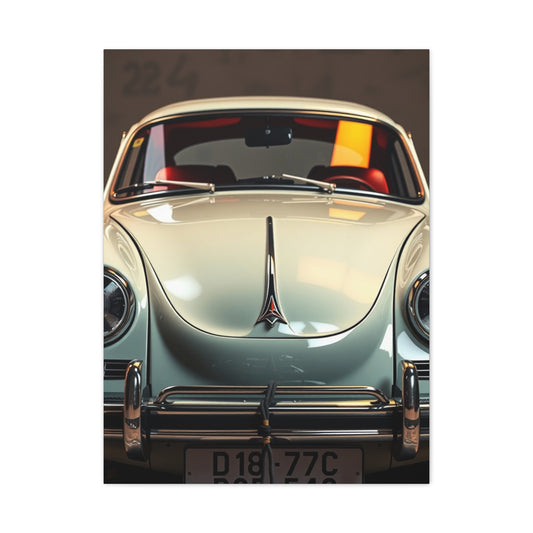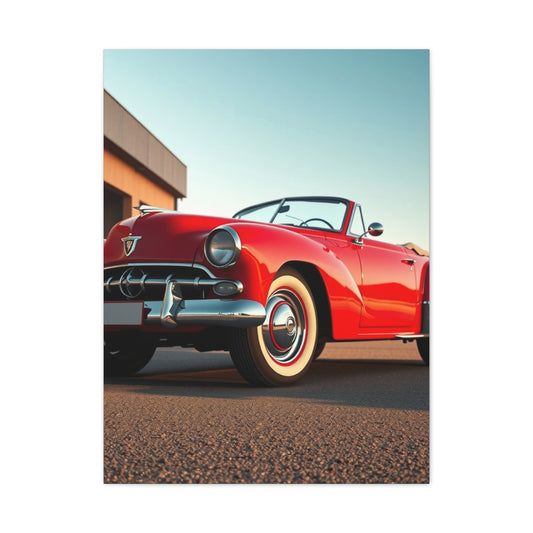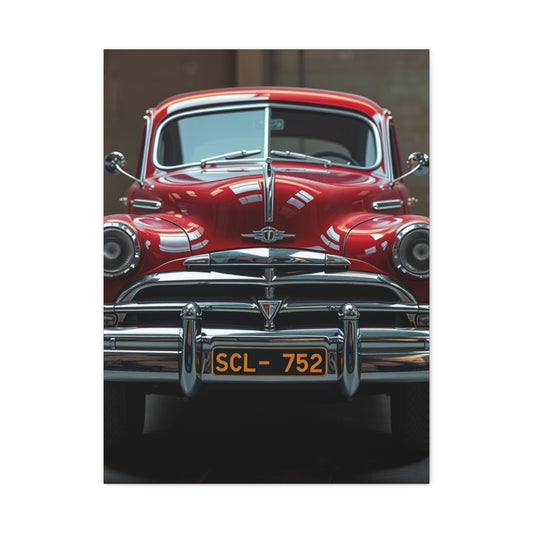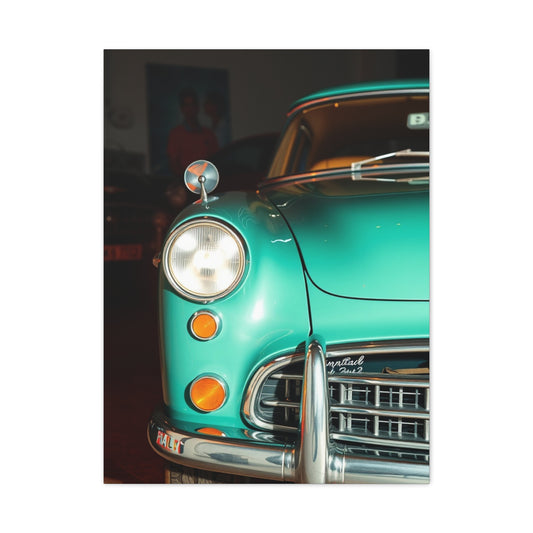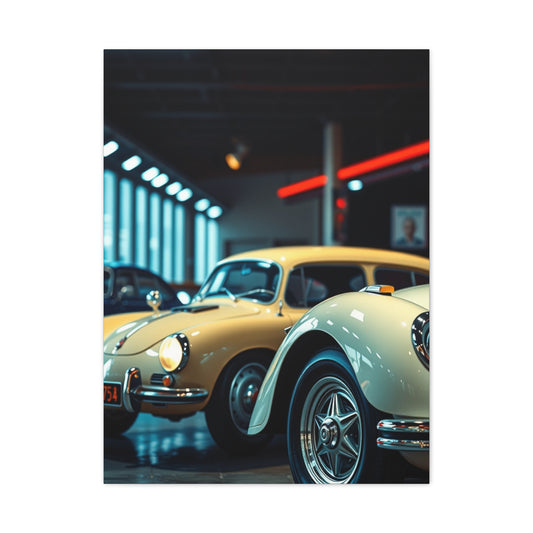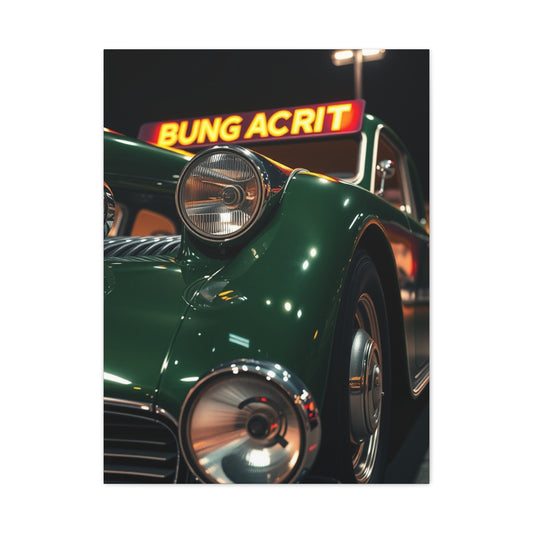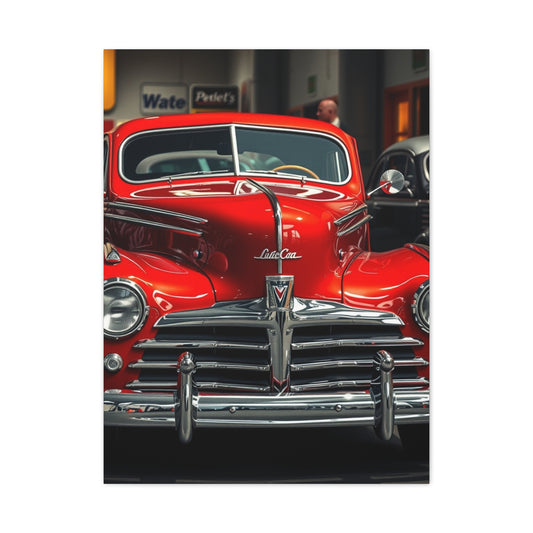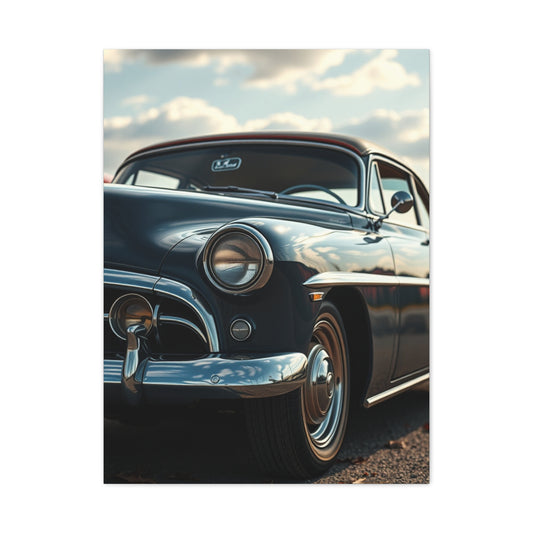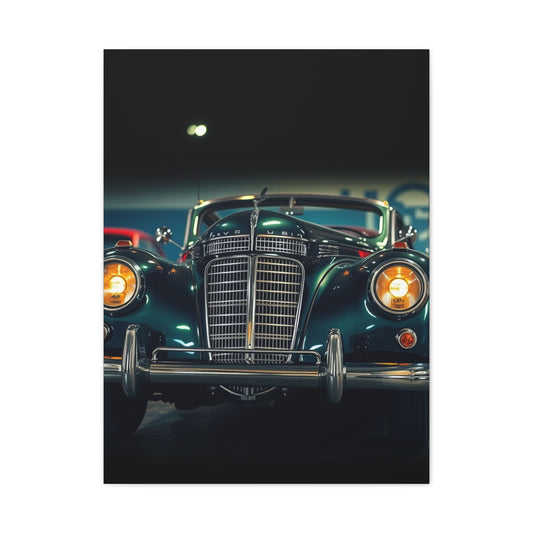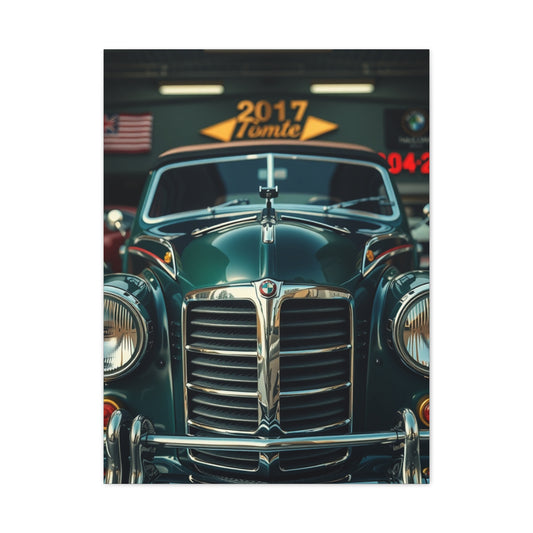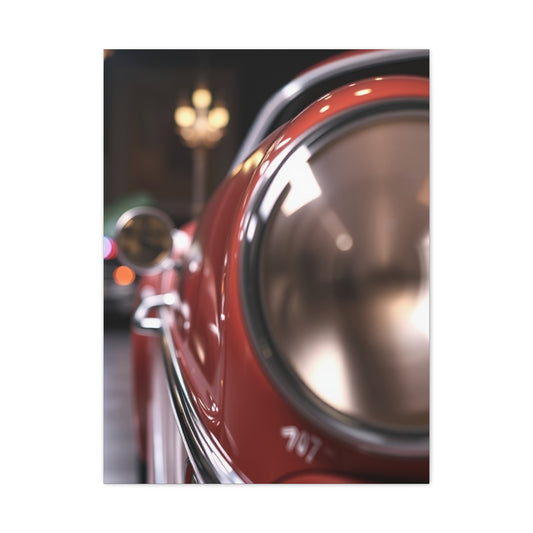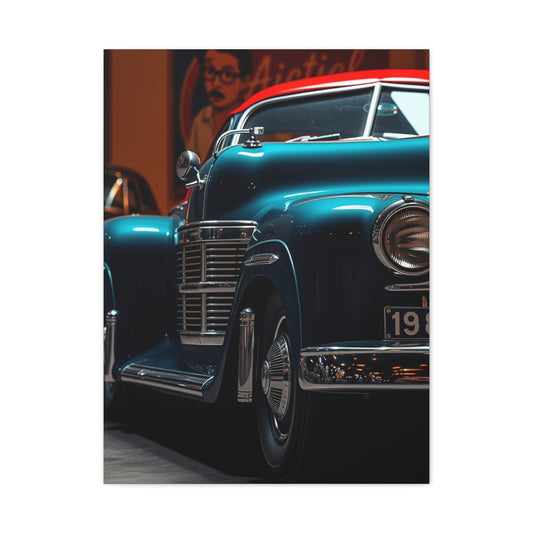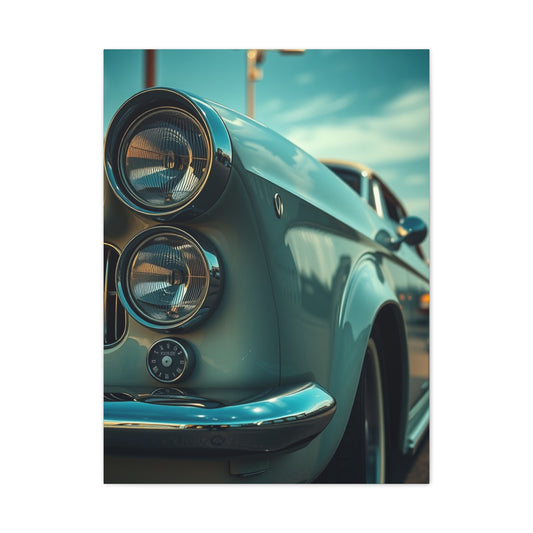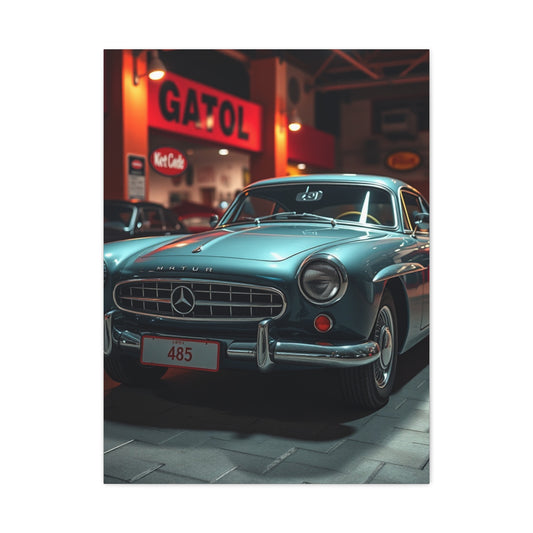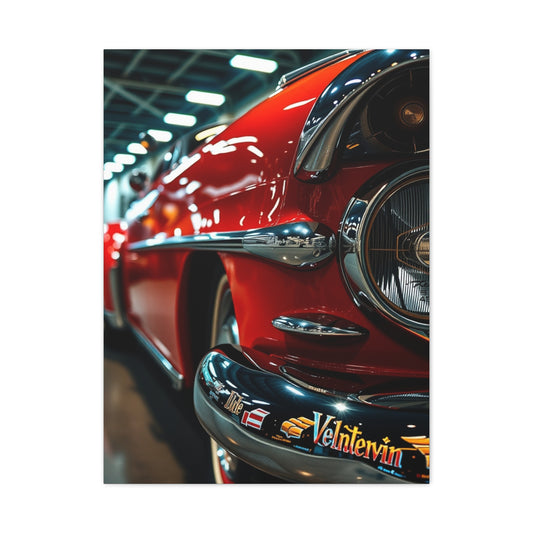-
Grand Touring Tableau Wall Art & Canvas Print
Regular price From $141.23 USDRegular priceUnit price per -
Vintage Vehicular Visions Wall Art & Canvas Print
Regular price From $141.23 USDRegular priceUnit price per -
Nostalgic Drive Collection Wall Art & Canvas Print
Regular price From $141.23 USDRegular priceUnit price per -
Timeless Wheels Artistry Wall Art & Canvas Print
Regular price From $141.23 USDRegular priceUnit price per -
Heritage Motoring Masterpiece Wall Art & Canvas Print
Regular price From $141.23 USDRegular priceUnit price per -
Legendary Car Legacy Canvas Wall Art & Canvas Print
Regular price From $141.23 USDRegular priceUnit price per -
Vintage Velocity Vignettes Wall Art & Canvas Print
Regular price From $141.23 USDRegular priceUnit price per -
Antiquarian Engine Artistry Wall Art & Canvas Print
Regular price From $141.23 USDRegular priceUnit price per -
Prestige Roadster Portraits Wall Art & Canvas Print
Regular price From $141.23 USDRegular priceUnit price per -
Heritage Highway Harmony Wall Art & Canvas Print
Regular price From $141.23 USDRegular priceUnit price per -
Antique Automobile Elegance Wall Art & Canvas Print
Regular price From $141.23 USDRegular priceUnit price per -
Deco Drive Opus Wall Art & Canvas Print
Regular price From $141.23 USDRegular priceUnit price per -
Retro Ride Revelry Art Wall Art & Canvas Print
Regular price From $141.23 USDRegular priceUnit price per -
Classic Car Reverie Canvas Wall Art & Canvas Print
Regular price From $141.23 USDRegular priceUnit price per -
Refined Retro Roadway Wall Art & Canvas Print
Regular price From $141.23 USDRegular priceUnit price per -
Opulent Automotive Odyssey Wall Art & Canvas Print
Regular price From $141.23 USDRegular priceUnit price per -
Historic Auto Aesthetic Wall Art & Canvas Print
Regular price From $141.23 USDRegular priceUnit price per -
Sophisticated Speed Legends Wall Art & Canvas Print
Regular price From $141.23 USDRegular priceUnit price per
Automotive Artwork from the Mille Miglia to Le Mans: A Celebration of Racing History
Automotive fine art transcends the boundaries of simple decoration—it is a celebration of engineering marvels, cultural identity, and the human spirit of progress. While many people view paintings or illustrations of cars as ornamental additions to a home, office, or gallery, true enthusiasts understand that such works represent a deeper narrative. They are visual testaments to human ingenuity, ambition, and the relentless pursuit of speed and perfection.
For racing devotees, collectors, and motorsport connoisseurs, automotive fine art evokes the same emotions as attending a live race or hearing the thunderous growl of engines from the grandstands. Each meticulously crafted canvas or print preserves not only the aesthetics of iconic vehicles but also the adrenaline-fueled atmosphere of the track, the tension of high-speed corners, and the triumphs and heartbreaks that define legendary competitions. When displayed on a wall, these artworks become portals into the golden eras of automotive history.
One of the most fascinating aspects of automotive fine art lies in its ability to encapsulate history. Artists often focus on legendary cars—Ferraris, Jaguars, Porsches, and Aston Martins—that once dominated racetracks or became cultural symbols of design and prestige. Through paint and imagination, they immortalize pivotal races such as Le Mans, Monaco, or Nürburgring, where drivers risked everything for glory. Every brushstroke transforms mechanical precision into artistic expression, ensuring that these achievements are remembered not only through photographs and trophies but through enduring visual narratives.
Beyond motorsport, automotive fine art also captures the spirit of everyday motoring and car culture. Classic cars cruising through winding countryside roads, gleaming convertibles parked by coastal highways, or vintage hot rods showcased in nostalgic Americana settings—all reflect the freedom and romance of the open road. These pieces speak to more than machines; they embody personal journeys, youthful dreams, and the universal fascination with motion.
The appeal also extends to design aficionados who appreciate the artistry behind the vehicles themselves. Cars have long been recognized as functional sculptures—moving works of art shaped by aerodynamics, craftsmanship, and vision. Fine art highlights these qualities, emphasizing curves, reflections, and silhouettes that mirror the essence of sculpture and architecture. In doing so, it bridges the gap between industrial design and creative expression.
Moreover, the medium of automotive fine art is far from limited. While oil paintings and watercolors remain timeless favorites, many contemporary artists are exploring new methods—digital renderings, mixed media, photography enhancements, and even 3D installations. Each technique provides a unique way to capture speed, movement, and atmosphere. Some artists deliberately blur backgrounds to emphasize velocity, while others create hyper-detailed, almost photographic depictions that draw the viewer into every nut, bolt, and reflection on chrome.
For collectors, owning automotive fine art is more than acquiring décor—it is preserving passion. Just as one might restore a vintage car to maintain its heritage, commissioning or collecting car-inspired artwork ensures that the emotional and cultural significance of motoring lives on. These artworks often become heirlooms, passed down through generations as reminders of both personal and shared histories.
What makes this genre truly timeless is its universality. Whether one has stood in the pit lanes of Formula 1, driven a cherished family car across scenic landscapes, or simply admired the elegance of a classic automobile in a museum, automotive fine art resonates. It speaks to the connection between humanity and the machine, reminding us that cars are not just vehicles but symbols of freedom, innovation, and artistry.
In essence, automotive fine art is more than visual pleasure. It is storytelling at its finest—capturing the roar of engines, the thrill of competition, and the quiet romance of a drive under the setting sun. It is history preserved in color and texture, engineering reimagined as expression, and passion made tangible. Its timeless appeal lies in its power to connect generations, cultures, and emotions, proving that the beauty of the automobile will always endure far beyond the racetrack or the showroom floor.
Why Racing-Inspired Artwork Holds Enduring Value
The enduring appeal of racing-inspired artwork rests in its rare ability to merge artistry with history, creating visual stories that celebrate the triumphs, tragedies, and innovations of motorsport. Unlike traditional landscape or portrait paintings that may only convey aesthetic appeal, motorsport art carries with it the energy of competition and the spirit of adventure. It serves as both an emotional connection for enthusiasts and a historical archive for future generations, ensuring that the legacies of legendary races and drivers are never forgotten.
At its core, this genre of art captures fleeting instants that would otherwise be lost to time. Consider the Mille Miglia, a thousand-mile challenge across Italian roads where machines were pushed to their limits and drivers tested the boundaries of human endurance. When this spectacle is translated onto canvas, it becomes more than just an image of a car speeding through countryside villages—it becomes a retelling of courage, precision, and resilience. Similarly, a painting of a Le Mans champion machine battling through the night does not merely highlight mechanical engineering but symbolizes the very human desire to persist against fatigue, adversity, and uncertainty.
For racing enthusiasts, such artwork holds an emotional significance that transcends aesthetics. To gaze at a painting of a Jaguar, Ferrari, or Mercedes-Benz conquering historic circuits is to relive the emotions of anticipation, tension, and exhilaration. Each brushstroke breathes life into the machines and drivers who once defied limits, transforming these artworks into time machines that carry viewers back to the golden decades of motorsport. Unlike film footage or written accounts, paintings offer a personalized interpretation of these events, allowing artists to emphasize atmosphere, speed, and intensity in ways that heighten the drama.
These pieces also serve a dual function—while undeniably artistic, they are simultaneously historical documents. Motorsport has long been shaped by defining events: the record-breaking run of Sterling Moss at the 1955 Mille Miglia, the heroic performances of Juan Manuel Fangio in Grand Prix circuits, or the tragic accident at Le Mans in 1955 that changed racing forever. By committing these stories to canvas, artists ensure that even those who never experienced the events firsthand can connect with their cultural and sporting significance. The artwork thus becomes a fragment of history, accessible not only to collectors but to anyone captivated by the romance of racing.
Another reason racing-inspired artwork retains enduring value lies in its exclusivity. Many of these works are produced in limited editions, sometimes signed by the drivers themselves. To own a print signed by icons such as Moss, Fangio, or Schumacher is to possess a tangible piece of history, a bridge between the spectator and the hero. The rarity of such pieces amplifies their desirability, transforming them from decorative art into cherished heirlooms and, in some cases, investments. Just as classic cars appreciate in value due to their scarcity and cultural importance, so too do these artworks increase in prestige over time.
Cultural nostalgia also plays a major role. For many collectors, motorsport art rekindles childhood memories of hearing engines roar on distant circuits, of reading about daring victories in newspapers, or of idolizing the fearless drivers who risked everything for glory. Artwork becomes a medium through which these personal emotions are reignited. A painting hanging in an office or home is not just wall décor—it is a statement of identity, a reflection of one’s passion, and a constant reminder of a beloved era.
Moreover, the artistry itself should not be underestimated. Painters like Nicholas Watts and Alan Fearnley demonstrate incredible technical skill in capturing motion, perspective, and atmosphere. The play of light on chrome bodywork, the glint of helmets under the sun, or the blur of a car speeding through rain-slicked roads reveal the painter’s mastery. This craftsmanship ensures that the artwork stands on its own as a creation of beauty, admired even by those who may not follow motorsport closely.
The Golden Age of European Motorsport on Canvas
The period between the 1920s and 1950s is often referred to as the golden age of European motorsport, a time when courage, innovation, and artistry converged to shape a sport that would capture the imagination of generations. This era was not just about machines racing on tarmac; it was about national pride, technological rivalry, and the indomitable spirit of drivers who risked everything for victory. Iconic events such as the Mille Miglia, the Targa Florio, and the 24 Hours of Le Mans became legendary not only for their difficulty but also for the atmosphere they cultivated—crowds spilling onto narrow village roads, the rumble of engines echoing across mountain passes, and the undeniable glamour that accompanied these spectacles.
Artists who focus on this extraordinary chapter of motorsport history do far more than replicate the sleek lines of vintage cars. Their work serves as a visual narrative, weaving together the grit of the racetrack, the romance of European landscapes, and the palpable tension of high-speed competition. On canvas, one can almost hear the thunderous roar of Bugattis, Alfa Romeos, and Mercedes-Benz Silver Arrows as they surged through cobblestoned streets or navigated treacherous mountain bends. These works are not static images; they are living testaments to the adrenaline and artistry of an age gone by.
What makes this era so captivating is the rawness of the sport. Unlike the meticulously engineered and safety-conscious races of today, drivers in the 1920s to 1950s faced immense dangers with limited protection. A crash could mean catastrophic consequences, yet the pursuit of glory outweighed the risks. Artists capture this duality—the thrill of victory and the ever-present shadow of danger—by infusing their pieces with energy, motion, and emotion. A brushstroke may depict the blur of speed, while subtle shading evokes the strain on drivers’ faces as they battled exhaustion and peril.
The Mille Miglia, a thousand-mile endurance race across Italy, remains one of the most frequently depicted subjects in automotive art. Paintings of this event often highlight the juxtaposition between the roaring engines and the serene Italian countryside, creating a contrast that underscores the uniqueness of the competition. Similarly, the Targa Florio—set on the demanding roads of Sicily—has inspired countless works that blend natural beauty with mechanical mastery. Here, art captures the essence of determination as drivers pushed their machines across rugged terrain, cheered on by villagers who lined the roadsides.
Equally iconic is the 24 Hours of Le Mans in France, a grueling test of both machine durability and driver stamina. Artistic interpretations of Le Mans emphasize endurance—the dim glow of headlights cutting through the night, pit crews working frantically under pressure, and the suspense of knowing that even the smallest mechanical fault could end a dream. Through paint and print, these moments are immortalized, allowing modern viewers to relive the drama of the longest day in motorsport.
Beyond the races themselves, the golden age of European motorsport represents a cultural phenomenon. Cars were more than vehicles; they were symbols of progress, national identity, and the promise of modernity. Artists reflect this by celebrating the aesthetics of design—the sweeping curves of a Ferrari 166, the aerodynamic elegance of a Maserati, or the bold presence of a Bentley Blower. In many paintings, the cars themselves are portrayed almost as living beings, imbued with character and spirit.
To collectors and enthusiasts, these works of art are not simply decorative pieces for walls; they are time capsules that preserve a world of passion and innovation. Every canvas becomes a story, one that connects the present to a heritage defined by bravery, ingenuity, and style. For those who appreciate both fine art and motorsport, owning a piece from this era is akin to holding history in tangible form—a daily reminder of the timeless allure of speed, skill, and spectacle.
Legendary Artists Who Shaped Automotive Art
The world of automotive artwork has been defined and elevated by visionary artists whose passion for speed, engineering, and racing history has translated into breathtaking visual masterpieces. These creators not only captured the physical likeness of legendary machines and their drivers but also conveyed the raw energy, drama, and emotion that surround the world of motorsport. Their works have become more than just decorative art pieces—they are cultural artifacts that preserve the spirit of competition, endurance, and human ambition.
One of the most celebrated figures in this genre is Nicholas Watts, a name synonymous with precision, atmosphere, and storytelling in motorsport art. Watts possesses a rare ability to immortalize historic races, not by simply recreating them, but by allowing viewers to feel the intensity of the moment. His most famous works often revolve around the great drivers of the mid-20th century, particularly Sterling Moss and Juan Manuel Fangio. Perhaps his most iconic creation is the depiction of Moss and his co-driver Denis Jenkinson piloting the Mercedes-Benz 300SLR #722 during the 1955 Mille Miglia. With striking detail, Watts portrays not just the car but the sensation of speed, the blur of the landscape, and the focused determination of the driver. This piece has become emblematic of racing artwork, celebrated by collectors and enthusiasts alike.
Alongside Watts, Michael Mate has also established a respected reputation within the field. Mate’s style often emphasizes atmosphere and emotion, using bold colors and dramatic contrasts to capture the essence of endurance racing. His depictions of Le Mans are particularly revered, as he masterfully illustrates the tension between machine and environment, such as the glowing headlights piercing through the French night or the rain-soaked circuits that tested the limits of drivers and cars. His works often carry a cinematic quality, bridging the line between historical documentation and interpretive artistry.
Another highly regarded figure is Juan Carlos Ferrigno, a Spanish-born artist known for his dynamic brushwork and expressive energy. Ferrigno’s paintings often highlight the sheer motion of racing, with cars seemingly leaping off the canvas. His use of vibrant tones conveys both power and elegance, qualities that make his work instantly recognizable. He has painted a wide spectrum of marques, from Ferrari and Porsche to Aston Martin and Mercedes-Benz, each infused with a distinct personality. His ability to balance technical accuracy with artistic freedom allows his work to resonate not only with car enthusiasts but also with those who appreciate fine art more broadly.
Alan Fearnley, meanwhile, is celebrated for his realistic and detailed approach. Unlike some of his contemporaries who lean toward impressionistic energy, Fearnley’s works often resemble photographic precision combined with artistic warmth. He has produced countless pieces that highlight racing icons, grand touring cars, and even classic scenes from everyday automotive culture. His art captures not just the excitement of motorsport but also the lifestyle and elegance that surround it, making his portfolio especially appealing to collectors with an appreciation for both heritage and sophistication.
Simon Ward rounds out this distinguished group with a unique modern flair. His creations frequently incorporate fresh perspectives, vibrant palettes, and innovative compositions that bring a contemporary edge to automotive art. Ward’s paintings often appeal to a younger generation of collectors, blending historical reverence with modern artistic sensibilities. His works demonstrate how the genre continues to evolve, proving that motorsport art is not confined to nostalgia but continues to thrive in today’s cultural landscape.
Together, these artists have shaped the identity of automotive artwork, each contributing their own distinctive style. Watts captures historical drama with unmatched narrative clarity, Mate emphasizes atmosphere and intensity, Ferrigno thrives on motion and energy, Fearnley delivers realism with elegance, and Ward introduces contemporary creativity. Their combined legacies have established automotive art as a respected field within fine art, attracting collectors from across the globe.
What makes their work truly enduring is the balance between accuracy and interpretation. Every racing machine, whether a Mercedes-Benz 300SLR, a Ferrari 250 GTO, or a Jaguar D-Type, is represented with meticulous attention to detail. Yet beyond technical accuracy, these artists breathe life into the vehicles, infusing them with emotion, character, and story. The result is artwork that does not merely depict cars but celebrates the essence of competition and innovation that defines motorsport history.
In many ways, these artists are not only painters but also historians and storytellers. Through their canvases, they safeguard memories of events like the Mille Miglia, the Targa Florio, and Le Mans, ensuring that the legacy of great drivers and machines continues to inspire future generations. For collectors, owning one of these works means owning a chapter of racing history, interpreted through the vision of a master artist.
The Role of Limited Editions and Authentic Signatures
In the world of automotive fine art, exclusivity is one of the most compelling elements that attracts serious collectors and enthusiasts alike. Art, when paired with rarity, develops a unique aura of prestige that elevates it from being merely a beautiful object to a coveted investment and cherished keepsake. This is why limited edition prints and authentic signatures hold such exceptional value. They not only represent craftsmanship and artistry but also encapsulate the spirit of motorsport history in a tangible, irreplaceable form.
Limited edition artworks are carefully produced in restricted numbers, sometimes as few as a handful of prints, ensuring that each piece maintains a sense of rarity. Unlike mass-produced posters or reproductions, these editions carry with them the promise of exclusivity. Knowing that only a small group of collectors around the world will ever own the same print gives these works a unique allure. The scarcity not only enhances their desirability but often increases their long-term worth. For many collectors, acquiring a limited edition motorsport artwork is as much about securing an investment as it is about indulging in passion.
Beyond the number of prints produced, what truly amplifies the prestige of these works are the authentic signatures that accompany them. The addition of a racing legend’s autograph—whether it belongs to Sir Stirling Moss, Juan Manuel Fangio, Mario Andretti, Emerson Fittipaldi, or Michael Schumacher—adds an entirely new dimension to the piece. It is no longer just an artwork representing a moment in motorsport history; it becomes a bridge between art and lived experience, between fans and their heroes. A signature transforms the piece into a deeply personal artifact that connects the collector directly to the individual who shaped racing history.
The presence of such signatures is not merely decorative but symbolic. For many enthusiasts, owning a signed motorsport artwork feels akin to holding a fragment of history itself. It blurs the line between visual storytelling and personal memorabilia. Consider, for example, a canvas depicting the thunderous energy of the Mille Miglia signed by a driver who once raced that very circuit. That single mark of ink carries with it a weight of authenticity and a sense of reverence that no reproduction could ever match.
This blending of artistry and racing heritage turns each signed and limited edition work into an heirloom. Families who pass down these pieces are not just transferring ownership of art; they are preserving narratives of bravery, engineering marvels, and the evolution of motorsport across generations. Collectors often speak of the pride they feel when displaying a signed piece in their home, as it becomes not only a stunning focal point of décor but also a conversation starter—a story embedded in ink and canvas.
Moreover, the combination of limited editions and signatures ensures enduring cultural significance. Motorsport itself thrives on legacies, from the iconic cars and tracks to the unforgettable personalities who defied danger in pursuit of glory. By uniting fine art with these legacies, collectors create a curated archive of triumphs, risks, and innovation that continues to inspire. In an era where digital reproductions are abundant and often fleeting, the rarity and authenticity of these artworks stand as a safeguard against disposability. They remind us that true artistry and history cannot be replicated endlessly; they must be preserved and cherished.
Mercedes-Benz Racing Legacy in Artistic Form
Among all the marques immortalized through motorsport artwork, Mercedes-Benz occupies a truly unique and profound place. Unlike many other automotive brands that maintained consistent participation in racing, the German manufacturer’s journey through motorsport history is marked by breathtaking triumphs, heart-wrenching tragedies, and an aura of myth that continues to inspire artists and collectors alike. When these stories are translated into artwork, they become more than just static images of cars in motion; they become visual testaments to human ambition, resilience, and the complicated relationship between innovation and risk.
Mercedes-Benz was already a dominant force in the pre-war Grand Prix era, a time when its iconic “Silver Arrows” were feared and admired across racing circuits. These sleek, unpainted machines became symbols of German engineering prowess, blending cutting-edge technology with bold design. Artists who portray these cars often focus on the raw minimalism and futuristic quality that made the Silver Arrows so distinctive. Their depictions are not merely about horsepower but about the way these cars seemed like messengers from a future yet to arrive. In paintings and prints, the Silver Arrows are shown gliding through Nürburgring’s treacherous corners or streaking down Monza’s straights, often surrounded by a haze of spectators and national pride.
Yet, no discussion of Mercedes-Benz in motorsport art can overlook the monumental 1950s era, when the brand returned to racing after World War II with renewed vigor. The Mercedes-Benz W196 and the legendary 300SLR quickly became icons of endurance and performance. Stirling Moss’s legendary Mille Miglia victory in 1955, achieved with Denis Jenkinson navigating, remains one of motorsport’s greatest feats. Countless artworks have captured this defining moment—Moss in the 300SLR #722 carving through Italian roads at breakneck speeds, an embodiment of precision and daring. These pieces often highlight not just the mechanical beauty of the car but the almost mythical aura surrounding the victory, a triumph that seemed to cement Mercedes-Benz as an unstoppable racing powerhouse.
However, 1955 was also the year of profound tragedy, when the Le Mans disaster shook the racing world to its core. A Mercedes-Benz 300SLR, driven by Pierre Levegh, became entangled in one of the darkest moments in motorsport history. The crash resulted in the deaths of over 80 spectators and forced Mercedes-Benz to withdraw from competitive racing for decades. For artists, this event presents an extraordinary challenge: how to capture the duality of a brand celebrated for excellence but also linked to sorrow. Many works that focus on this chapter portray both the heroism of drivers and the sobering fragility of motorsport itself. Unlike typical racing art filled with motion and color, these pieces often carry a somber, reflective tone—images where shadows and muted hues echo the weight of loss.
This dual legacy of glory and grief is what gives Mercedes-Benz artwork a special depth. Collectors are drawn not only to the dazzling depictions of cars at speed but also to the layers of history embedded within the imagery. Owning a painting of Moss’s Mille Miglia triumph or an evocative rendering of the Silver Arrows is akin to holding a fragment of racing’s soul—a reminder of both the allure and the risks of pushing human and mechanical limits.
Furthermore, Mercedes-Benz’s later return to racing in the 1980s and beyond—culminating in modern Formula One dominance—has provided fresh inspiration for contemporary artists. Today’s works may feature Lewis Hamilton’s championship-winning machines, echoing the same themes of innovation and resilience that defined the marque decades earlier. By bridging past and present, these artworks reinforce Mercedes-Benz’s reputation as a timeless subject in the visual storytelling of motorsport.
Ultimately, the artistic portrayals of Mercedes-Benz racing history transcend the cars themselves. They represent the essence of human aspiration—our quest to move faster, reach further, and test the boundaries of what is possible. They remind us that with every great achievement comes responsibility, and that even in moments of tragedy, the courage and determination of drivers and teams leave behind a legacy worth honoring. In this way, Mercedes-Benz racing art endures not just as decoration but as a visual chronicle of triumph, tragedy, and timeless pursuit.
Celebrated Moments Captured Through Paintings
Automotive fine art finds its deepest resonance in its ability to tell stories through imagery. Every brushstroke, every composition, and every carefully chosen color scheme becomes part of a visual narrative that speaks to both racing purists and casual admirers. Unlike static photographs, which often freeze a single instant, paintings of motorsport scenes breathe life into history by interpreting emotions, atmosphere, and movement in ways that transcend literal documentation. These works of art invite viewers not just to see the cars, but to relive the drama, the tension, and the exhilaration that defined the golden chapters of racing.
For instance, Nicholas Watts’ celebrated depiction of Juan Manuel Fangio leading the French Grand Prix of 1954 does more than show a car in motion. It immortalizes the aura of a man who redefined what it meant to be a driver in an age where courage was the only safety barrier. Fangio’s dominance on the circuit is not merely reflected in the gleaming curves of his Maserati but also in the atmosphere Watts captures—the anticipation of the spectators, the dust rising from the track, and the raw intensity radiating from the painting itself. Such artistry preserves Fangio not only as a driver but as an icon of endurance, discipline, and mastery of his craft.
Beyond portraits of legendary drivers, many works focus on the machines themselves—rolling sculptures designed for speed, precision, and innovation. Aston Martin’s elegant racers, Jaguar’s sleek endurance machines, Ferrari’s roaring V12 icons, and Porsche’s meticulously engineered champions have all become subjects of fine art. Each depiction is more than an aesthetic celebration of design; it is a tribute to rivalries that shaped motorsport history. These rivalries pushed both engineering ingenuity and human resilience to new heights, ensuring that every race was more than a competition—it was a cultural milestone.
Paintings of iconic duels on the track often emphasize the emotional weight of the moment. The sight of two cars neck-and-neck under the fading glow of dusk at Le Mans, or the tense precision of a hairpin corner in the Mille Miglia, captures more than the event—it conveys the very essence of endurance racing. The viewer can almost hear the engines reverberating, feel the ground tremble under the wheels, and sense the adrenaline coursing through the veins of both drivers and fans alike. These moments become timeless, preserved not as fleeting spectacles but as enduring artistic expressions.
Equally important is the way motorsport paintings emphasize the collective spirit behind individual victories. Endurance racing, perhaps more than any other form of motorsport, is a symphony of teamwork and strategy. Behind every triumphant driver stands a team of engineers, mechanics, and visionaries who worked tirelessly to ensure success. Artistic interpretations of pit stops, team celebrations, and even the quiet determination before the race encapsulate the broader narrative of motorsport—the blend of human ambition and technical brilliance.
What makes these artworks particularly powerful is their ability to transcend generational boundaries. A viewer unfamiliar with the technical details of a 1950s Ferrari can still feel the passion and urgency depicted in the canvas. Similarly, a seasoned collector can analyze the accuracy of every detail while simultaneously being swept away by the emotions conveyed. This dual capacity—to inform and to inspire—elevates motorsport fine art into a cultural phenomenon rather than a niche pursuit.
In this sense, every painting or limited-edition print becomes more than an object of décor. It becomes a vessel of memory, a bridge connecting past triumphs with present admiration. From Fangio’s dominance to the relentless spirit of Aston Martin or Porsche, each piece invites its owner to be part of a larger story—a story where speed meets artistry, and where fleeting victories are immortalized forever on canvas.
Mille Miglia: The Legendary Thousand-Mile Race
The Mille Miglia, whose name translates to “Thousand Miles,” remains one of the most legendary and romanticized motor races in history. Far removed from the closed-circuit racing we know today, this event unfolded on open Italian public roads, weaving through villages, cities, mountains, and countryside across an unforgiving 1,000-mile route. First held in 1927 and continuing until 1957 in its original format, the Mille Miglia tested not only the endurance of machines but also the resilience, skill, and bravery of the drivers who dared to participate.
Unlike modern competitions designed around safety barriers and precision-built circuits, the Mille Miglia thrust competitors into an environment filled with unpredictability. Drivers navigated sharp mountain switchbacks, narrow cobblestone streets, and long high-speed straights lined with cheering spectators standing only a few feet from the racing cars. Rain, fog, and dust often added further obstacles, while mechanical failures lurked at every turn. Yet, despite—or perhaps because of—these extreme risks, the race quickly established itself as a proving ground for manufacturers and a showcase of human determination.
For artists, the Mille Miglia offers an extraordinary narrative canvas. Few motorsport events combine such breathtaking beauty with such stark peril. Paintings that capture the race often juxtapose Italy’s scenic landscapes with the thunderous passage of racing machines, highlighting the tension between elegance and danger. Artists are drawn to the way the Mille Miglia embodies both spectacle and struggle, making it a powerful subject that goes beyond technical illustration to convey raw emotion.
Perhaps the most iconic moment in the Mille Miglia’s history—and one of the greatest feats in motorsport—was the 1955 victory of Sir Stirling Moss and his co-driver Denis Jenkinson. Piloting the Mercedes-Benz 300SLR #722, they completed the thousand-mile course in just 10 hours, 7 minutes, and 48 seconds, setting a record that would never be broken. Jenkinson’s innovative use of pace notes, communicated to Moss through hand signals, revolutionized the way rally and endurance races were approached. Artists who depict this monumental triumph often emphasize not just the speed of the silver Mercedes but also the trust and synchronicity between driver and navigator, immortalizing teamwork as much as individual brilliance.
Yet, the Mille Miglia is not remembered solely for its triumphs. Its history is also shadowed by tragedy. The 1957 race, which would ultimately be its last in competitive form, ended in disaster when a crash claimed the lives of both driver Alfonso de Portago, his co-driver Edmund Nelson, and several spectators. The event underscored the inherent danger of such an unforgiving format, and it became clear that motorsport could not continue on public roads under such hazardous conditions. The tragedy marked the end of the Mille Miglia’s competitive chapter, though it has since been revived as a regularity rally, celebrating its heritage while prioritizing safety.
In the world of racing-inspired art, the Mille Miglia holds unparalleled allure. A single painting can encapsulate the spirit of an era when courage seemed limitless and the pursuit of speed knew no compromise. Works depicting the Mille Miglia often feature iconic machines like the Alfa Romeo 8C, Ferrari 166 MM, or Mercedes-Benz 300SLR, each car rendered as both a technical marvel and a symbol of adventure. Collectors and enthusiasts value such pieces not only for their aesthetic appeal but also for the rich storytelling they embody.
Ultimately, the Mille Miglia endures as a cultural legend. It represents the fusion of sport, art, and history, where the boundaries between racing and storytelling blur. To own or even view artwork inspired by this event is to connect with a legacy of audacity, skill, and resilience. It is to stand at the crossroads of beauty and danger, where the human desire for speed once transformed Italian roads into the stage of a myth that continues to inspire artists and admirers worldwide.
The Targa Florio and the End of an Era
The Targa Florio, one of Italy’s most storied and prestigious races, remains an enduring symbol of motorsport’s daring spirit. First held in 1906, this legendary event unfolded across Sicily’s rugged and picturesque roads, where drivers navigated perilous mountain passes, sharp hairpin bends, and narrow village streets lined with passionate crowds. Unlike closed racing circuits, the Targa Florio was contested on public roads, blending everyday life with the adrenaline-fueled world of high-speed competition. The race became a cultural phenomenon that fused engineering brilliance with the raw beauty of Sicily, leaving an indelible mark on both motorsport history and artistic interpretation.
Artists who revisit this subject often highlight the paradoxical charm of the event. On one hand, the Targa Florio was notorious for its extreme dangers. The winding routes and lack of modern safety infrastructure demanded extraordinary skill and courage from drivers, who pushed themselves and their machines to the absolute limit. On the other hand, the race offered unparalleled scenic beauty. Canvases portraying iconic cars roaring past olive groves, medieval stone villages, or the dramatic backdrop of the Sicilian mountains capture this duality, where danger and splendor coexisted in a uniquely compelling spectacle.
By the early 1970s, mounting safety concerns brought an end to the Targa Florio. Advances in car technology made vehicles faster and more powerful, but the roads remained treacherous and ill-suited for modern machines. The tragic accidents that occurred during these years underscored the growing risks, leading organizers to discontinue the event as part of the World Sportscar Championship calendar. Yet even after its conclusion, the romantic aura of the Targa Florio endures.
Conclusion:
Automotive artwork from the Mille Miglia to Le Mans represents far more than visual interpretations of cars and drivers. It embodies a cultural fusion where mechanical brilliance meets artistic mastery. Each brushstroke or print run speaks to generations of enthusiasts who continue to revere the daring heroes and breathtaking machines of motorsport’s golden era.
The appeal of these works lies in their ability to transcend time. While cars may age, and races may fade into history, art immortalizes them with an eternal vibrancy. When collectors admire a painting of the Mercedes-Benz 300SLR or Fangio’s brilliance at the Grand Prix, they are not merely appreciating lines and colors. They are revisiting emotions—anticipation, exhilaration, and triumph—that define the racing spirit.
Furthermore, the limited nature of these pieces enhances their significance. A signed print by a legendary driver becomes not only a collectible but a living link between past and present. Such authenticity cannot be replicated, ensuring that each artwork remains an invaluable possession for enthusiasts.
The Mille Miglia, the Targa Florio, and the 24 Hours of Le Mans serve as more than racing events. They symbolize resilience, innovation, and cultural celebration. Art that captures their essence safeguards these legacies, ensuring future generations comprehend the daring that once defined motorsport.
Ultimately, automotive artwork is a dialogue between engineering marvels and human artistry. It connects precision mechanics with imaginative interpretation, producing a synergy that continues to enchant both art connoisseurs and racing devotees. From roaring engines on Italian streets to endurance battles under French skies, this artistic form keeps alive the magic of motorsport in its purest essence.
In today’s world, where technology accelerates change and history risks being forgotten, these works remain vital. They remind us of a period when motorsport was both romance and danger, art and competition, innovation and risk. By preserving these stories through paint and canvas, artists have ensured that legends will never be silenced. Automotive artwork from the Mille Miglia to Le Mans is, and always will be, a timeless tribute to the passion that unites art, history, and racing.


